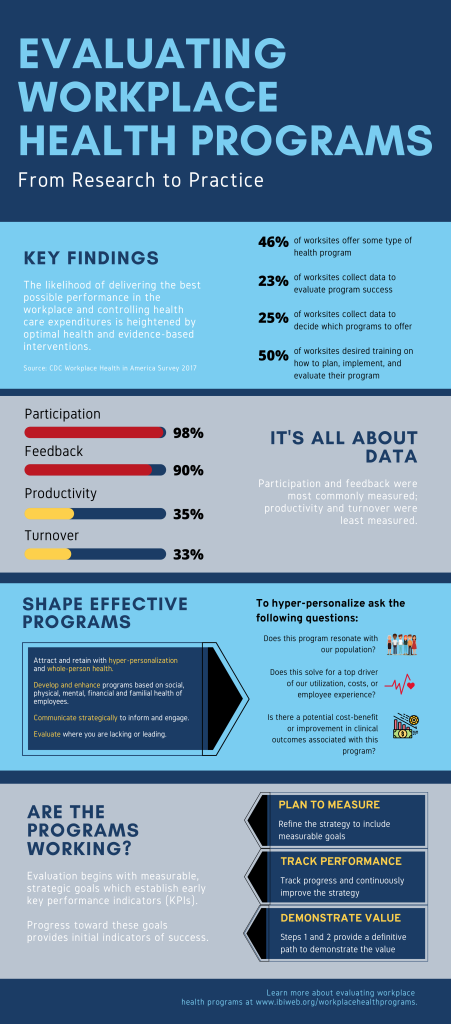To help employers better understand the current landscape of workplace health programmes to encourage the health and wellbeing of their employees, health and productivity research non-profit, Integrated Benefits Institute conducted an analysis of current offerings and trends. The study found that less than half (46%) of US employers offer some type of workplace health to employees and smaller worksites were less likely than larger ones to offer most programmes.
As employers look for ways to better support their staff and retain a competitive edge during what’s become known as ‘The Great Resignation,’ many are rethinking their worksite programmes, policies, benefits and environmental support. The analysis also found that one in three worksites (36%) offered some type of health promotion programme, followed by health screening programmes (24%) and disease management programmes (19%).

The study analysed data from the most recent Workplace Health in America Survey, collected by the Centres for Disease Control and Prevention. One in four worksites offered some type of health promotion programme (e.g., physical activity, weight management, tobacco use), followed by health screening programmes (24%) and disease management programmes (19%). Evaluation of the programmes is critically important to their success, however, only 50% of worksites collect data to evaluate success and half use data to decide which programmes to offer.
“Surprisingly, I found that many employers do not have a measurement strategy for the success of their workplace health programmes,” said Carole Bonner, IBI Researcher. “When asked to demonstrate the value of the programme, many employers are at a loss. As I dug into the research, I realized the challenge is rooted in a lack of measurable goals and objectives to establish criteria and standards to gauge performance. The path to evaluating a programme’s performance can be achieved once measurable objectives are identified.”
Out of those who have WHPs, nearly all worksites collect data regarding participation (98.3%) and employee programme feedback (89.7%). Important productivity measures – absenteeism (38.7%), presenteeism (35.3%) and turnover (32.8%) – were captured the least. There are benefits in terms of employee happiness, engagement, productivity, talent attraction and retention, industry recognition and general organisational culture. Including these measurements can serve to increase support from leadership on the value and benefit of WHPs.
In addition to the survey findings, IBI sought input from human resource and benefits experts at leading healthcare, financial services, logistics and industrial firms to help employers foster a culture that encourages healthy decisions and utilisation of supportive programmes and benefits. Recommendations include:
- Gain a competitive attraction/retention advantage through hyper-personalisation and whole-person health.
- Develop and enhance programmes according to the convergence of social, physical, mental, financial and familial health of the employee.
- Communicate strategically to inform and engage employees, train leadership and attract and retain talent.
- Evaluate where programmes are lacking or leading in workplace practices
“For employers, the theme here is to really know your population and understand their needs in the present. Doing so requires a willingness to ask hard questions, listen to feedback and find solutions that fill those needs – this builds trust, which is at the core of a great workplace culture,” added Kelly McDevitt, President, IBI.
Click below to share this article

